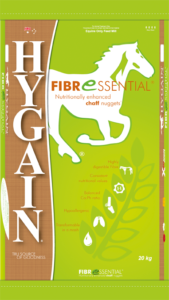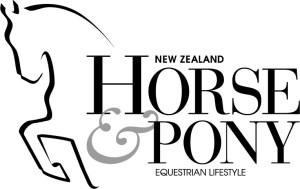
Roughage is critical for the health and well-being of all horses, and should be the basis for any feeding program. Understanding the design, function and reliance of the horse’s digestive system on roughage is the first step in appreciating its critical value. Knowledge of what’s in roughage, the types and physical forms and importance of roughage quality, should be common knowledge for all horse owners.
Digestion of roughage
The unique structure and function of the horse’s digestive system is ideally suited for the utilisation of roughage and as such, horses are classified as herbivores or plant eaters. Horses are also referred to as “hindgut fermenters” since the back portion of the digestive tract is a large fermentation vat.
The horse’s hindgut is the largest area of the digestive system, making up over 65% of the digestive capacity. Billions of bacteria and protozoa live in this portion of the digestive tract, whose job it is to break down (ferment) plant fibre from roughage.
The intestinal microorganisms produce energy-yielding compounds called volatile fatty acids, as well as amino acids and B-vitamins, that can be absorbed by the horse.
What’s in roughage?
Roughage contains all of the essential nutrients required by horses: water, energy, protein, vitamins and minerals.
- Water. Pasture contains large amounts of water, while preserved roughages (hay and chaff) have been dried to prevent mould growth whilst in storage.
- Protein. Highest in legumes (lucerne and clover), lower in grasses, and lowest in oaten or wheaten chaff.
- Fat . Roughage contains a small amount of fat, which is high in omega-3 fatty acids.
- Fibre. Not all of the fibre in roughages is digestible, with an overall estimate of digestibility ranging from 40 to 50%.
- Minerals. A number of important minerals such as calcium, phosphorus, potassium, copper, zinc and others are present in roughage, but the exact mineral content of pasture, hay and chaff is dependent on the soil condition where the plants are grown.
- Vitamins. The vitamin content of green roughages is higher compared to sun-bleached or weather-damaged roughage.
Types and physical forms of roughage
Roughage comes in many different types and physical forms; the simplest forms as pasture, hay and chaff.
Alternative forms of roughage include soy hulls, lupin hulls and beet pulp, which are highly digestible compared to pasture or hay. These alternative fibre sources are based on soluble fibres, also known as super-fibres, that provide digestible energy levels somewhere between that of good quality hay and grains.

Super-fibres are an alternative energy source to grains, with less starch and sugar. Combining these fibre sources into a nugget or cube makes them most convenient and efficient to feed, and that is exactly why HYGAIN® has developed HYGAIN FIBRESSENTIAL®, a revolutionary fibre source consisting of soluble fibres in the form of an extruded nugget.
Supplementing the horse’s diet with soluble fibre nuggets or cubes as opposed to traditional forms of chaff provides numerous benefits to horses and horse owners:
- Conditioning with less starch/sugar. Highly digestible fibres provide superior conditioning and greater feed utilisation to traditional chaff. Consequently, less grain (starch) is required to maintain the horse’s body weight.
- Less dust. Varying levels of dust and fines in traditional forms of chaff may be problematic for horses with respiratory health issues. The production process and the physical form of the extruded fibre nuggets reduces the amount of dust fines, making them superior for horses with respiratory problems.
- Consistent nutrient values. Nutritional values of traditional forms of chaff can vary greatly according to season and good quality chaff may not be available at times. Fibre nuggets, on the other hand, are made to certain specifications and provide consistent nutrient values all year around.
- Balanced calcium-to-phosphorous ratio. Chaff may provide inconsistent and/or unbalanced calcium-to-phosphorous ratios. However, HYGAIN FIBRESSENTIAL® provides calcium and phosphorous in a balanced ratio, supporting the maintenance of healthy bones.
- Transforms into a mash. Traditional forms of chaff may provide a challenge for horses with dental issues. Extruded fibre cubes such as HYGAIN FIBRESSENTIAL® can be soaked in water, providing a high-fibre mash for horses with poor dentition. A secondary advantage to wetting fibre nuggets is it can slow down the rate of intake by the horse.
- Ease of storage and transportation. Where chaff bags are quite bulky and take up a lot of room, bags of extruded fibre nuggets have a much higher product density, resulting in significantly lower storage space in the feed room. Furthermore, fibre nuggets are easier to carry and transport, especially when travelling to events.
- Limited roughage wastage. Horses fed loose hay or chaff often waste 20%-40% (it’s blown away by the wind or trampled underfoot). If offered free-choice, most horses will consume more fibre cubes than hay, so owners should measure and monitor their horses’ intake carefully.
- Food safety standard approved. HYGAIN FIBRESSENTIAL® is produced in HACCP and Feed Safe accredited facilities, unlike most traditional forms of chaff.

Fibressential comes in the form of an extruded nugget
Roughage contains many essential nutrients and the fibre provided by roughage is important to the horse’s digestive health. Next to traditional forms of roughage (pasture, hay and chaff), alternative forms such as fibre nuggets and cubes have gained popularity. Fibre nuggets can be used as a complete chaff replacer (feed ration 1:1 based on weight) and partial hay replacer, providing many benefits to the horse and horse owner.
Roughage should be offered free-choice to horses, unless they are is obese or prone to roughage-related allergies.
Feeding large volumes of roughage will maximise digestive health and minimise the amount of grain that will need to be provided to the horse.
Get a free personalised diet analysis for your horse: Fill out the five easy step Hygain Nutrikey form at the link below, and have a nutrition consultant assess your horse’s diet.
http://www.hygain.com/au/nutrikey






